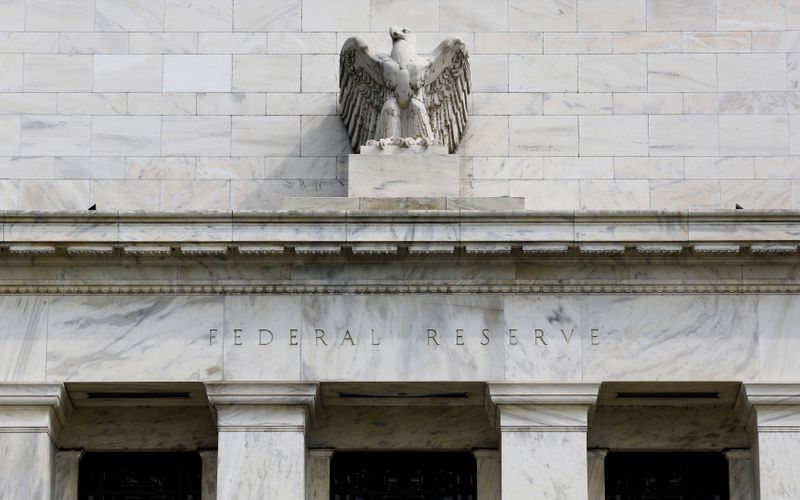(Reuters) – Federal Reserve policymakers begin a two-day meeting Tuesday to discuss the U.S. jobs and inflation outlook and craft a policy response that could edge the central bank closer to dialing down its support for the economy.
Here are five things to look for from the meeting, which wraps up on Wednesday at 2 p.m. ET. (1800 GMT)
FURTHER PROGRESS?
The Fed has promised not to cut back on the $120 billion of Treasuries and mortgage-backed securities it is buying each month until it sees “substantial further progress” toward its goals of maximum employment and 2% inflation.
Fed Chair Jerome Powell in August said he felt that bar has already been met on inflation, and saw “clear progress” on the employment front, making a bond program taper likely appropriate this year [L1N2PY1FI].
But that was before a government report showed an unexpectedly weak gain of 235,000 jobs last month.
Policymakers will debate the jobs trajectory, now that the summer’s COVID-19 surge has begun to recede, and the risk of inflation becoming persistent.
At their last meeting in July, policymakers noted “progress” toward their goals.
Adding an adjective like “clear” or “further” would be one way to move closer to a decision to reduce their bond-buying, perhaps as soon as November.
DOTS
Fed policymakers want to separate a decision to taper asset purchases from a later decision to raise their short-term policy rate from near zero.
Quarterly projections due on Wednesday could muddy that distinction if they show Fed policymakers pulling forward to 2022 their expectation for that first rate hike.
In June the majority expected to keep rates where they are until 2023 or later. This meeting will be the first to include forecasts for 2024.
DEBT CEILING DEBACLE
Without lawmaker action to raise the current $28.4 trillion limit on federal government borrowing, the country will run out of operating funds on Oct. 1, triggering a partial government shutdown. Weeks later the nation could run out of funds to pay its bills.
The resulting default would roil markets, plunge the country back into recession and permanently damage the American economy, Treasury Secretary Janet Yellen has said.
The last time the nation faced a similar debt ceiling scare, in 2013, Fed policymakers secretly mapped out a range of potential actions to counter what they thought could be severe and destabilizing market stress. It’s unlikely Powell will provide any clear roadmap this week, but he may be asked about it at his news conference Wednesday.
CHANGE AT THE TOP
This week’s meeting is the last before changes in Fed leadership that could prove to be anywhere from measured to historic, depending on how U.S. President Joe Biden uses the opportunity.
Randal Quarles’ term as vice chair for supervision ends on Oct. 13. He may stay on as Fed governor, but Biden is expected to name another as the Fed’s new financial regulation czar.
Biden will also need to decide whether to reappoint Powell and whom to pick to succeed Fed Vice Chair Richard Clarida, whose term ends Jan. 31. There is also one vacant seat on the Fed’s seven-member board.
An announcement could come in the weeks before the Fed’s next two-day session on Nov. 2-3.
MARKETS, ETHICS
Other issues are also battling for Fed policymakers’ attention. Among them:
A U.S. stock market plunge on worry that a potential default by property developer China Evergrande Group could destabilize global financial markets.
A sweeping internal review of policies governing Fed officials’ financial dealings following a blowup over the ethics of securities trading by two Fed presidents that has drawn calls for change by Senator Elizabeth Warren, among others.
(Reporting by Ann Saphir; Editing by Dan Burns and Cynthia Osterman)























